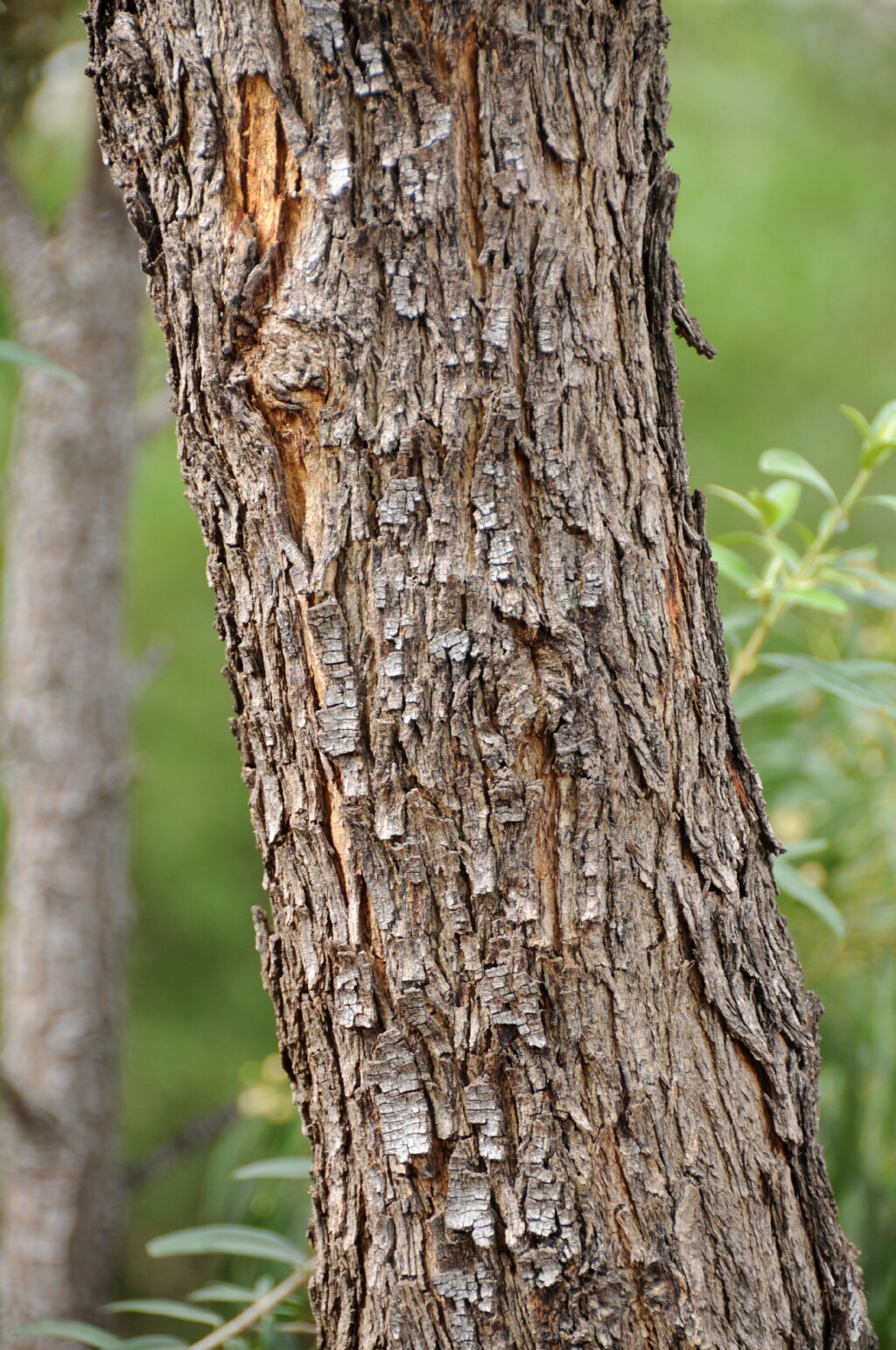Acacia implexa
Benth. LightwoodShrub or small tree, 3–15 m high, often suckering; branchlets angular and commonly lightly pruinose, becoming terete with slight ridges, glabrous. Phyllodes descending, usually falcate, 7–20 cm long, 6–25 mm wide, broadest near or below middle, chartaceous to thin-coriaceous, glabrous, acute to acuminate, tip sometimes callose and curved to circinate; main veins 3, slightly raised, distant, with numerous, smaller, frequently anastamosing veins. Racemes 4–8-headed, rachis 10–45 mm long; peduncles 6–15 mm long, glabrous; heads globular, 5–6 mm diam., 30–52-flowered, cream to pale yellow. Flowers 5-merous; sepals three-quarters united, lobes fimbriate. Pods linear, to 25 cm long, 4–7 mm wide, somewhat woody or thick-coriaceous, twisted and coiled, margins thickened; seeds longitudinal, oblong-oval, 4–5 mm long, semi-glossy, dark-brown, funicle aril fleshy, white, in 1 or 2 loops over apex of seed. Flowers Dec.–Mar.
Wim, VVP, VRiv, MuF, GipP, OtP, Gold, CVU, GGr, DunT, NIS, EGL, EGU, HSF, HNF, MonT, HFE, VAlp. Also Qld, NSW, Tas. (King Is. only). Widespread in hilly country and on fertile plains, mostly in open forest and usually on shallow drier soils.
Similar to A. frigescens in having broad, 3-veined phyllodes with the tips often callose, heads in short racemes, similar perianth and bracteoles and seeds with a fleshy funicle. The 2 species differ in the shape of the phyllodes and the twisted and coiled legumes of A. implexa. See also notes under A. melanoxylon.
Entwisle, T.J.; Maslin, B.R.; Cowan, R.S.; Court, A.B. (1996). Mimosaceae. In: Walsh, N.G.; Entwisle, T.J., Flora of Victoria Vol. 3, Dicotyledons Winteraceae to Myrtaceae, pp. 585–658. Inkata Press, Melbourne.
 Spinning
Spinning

